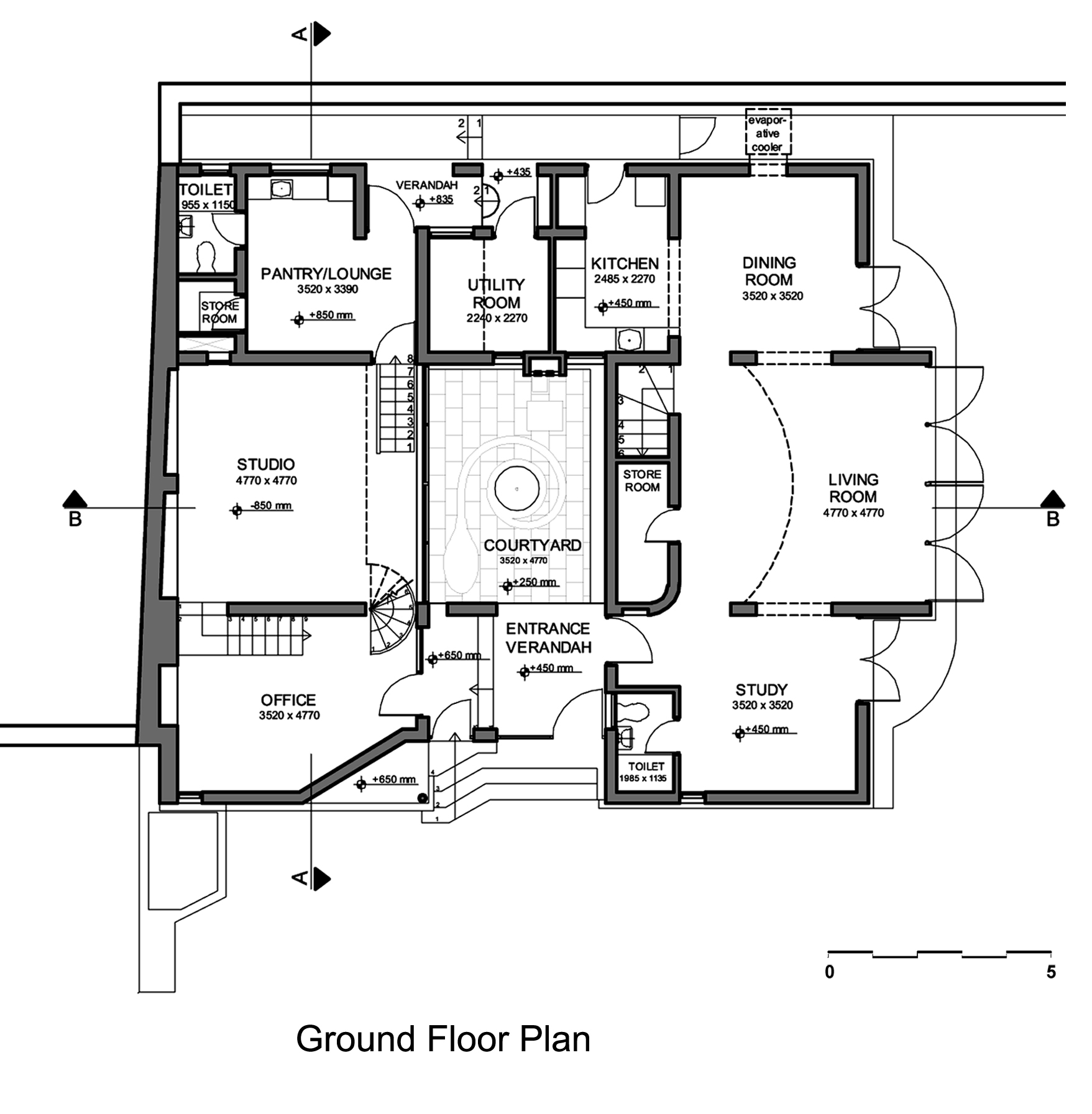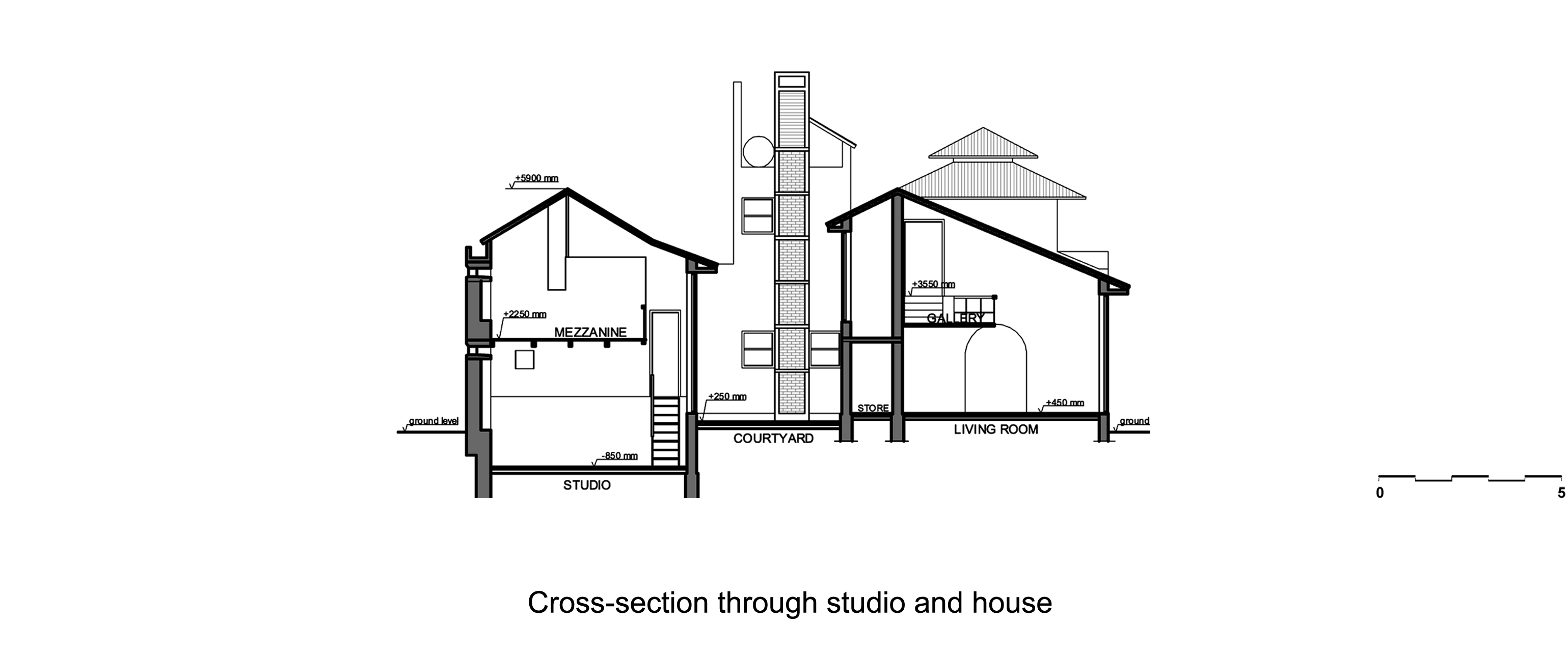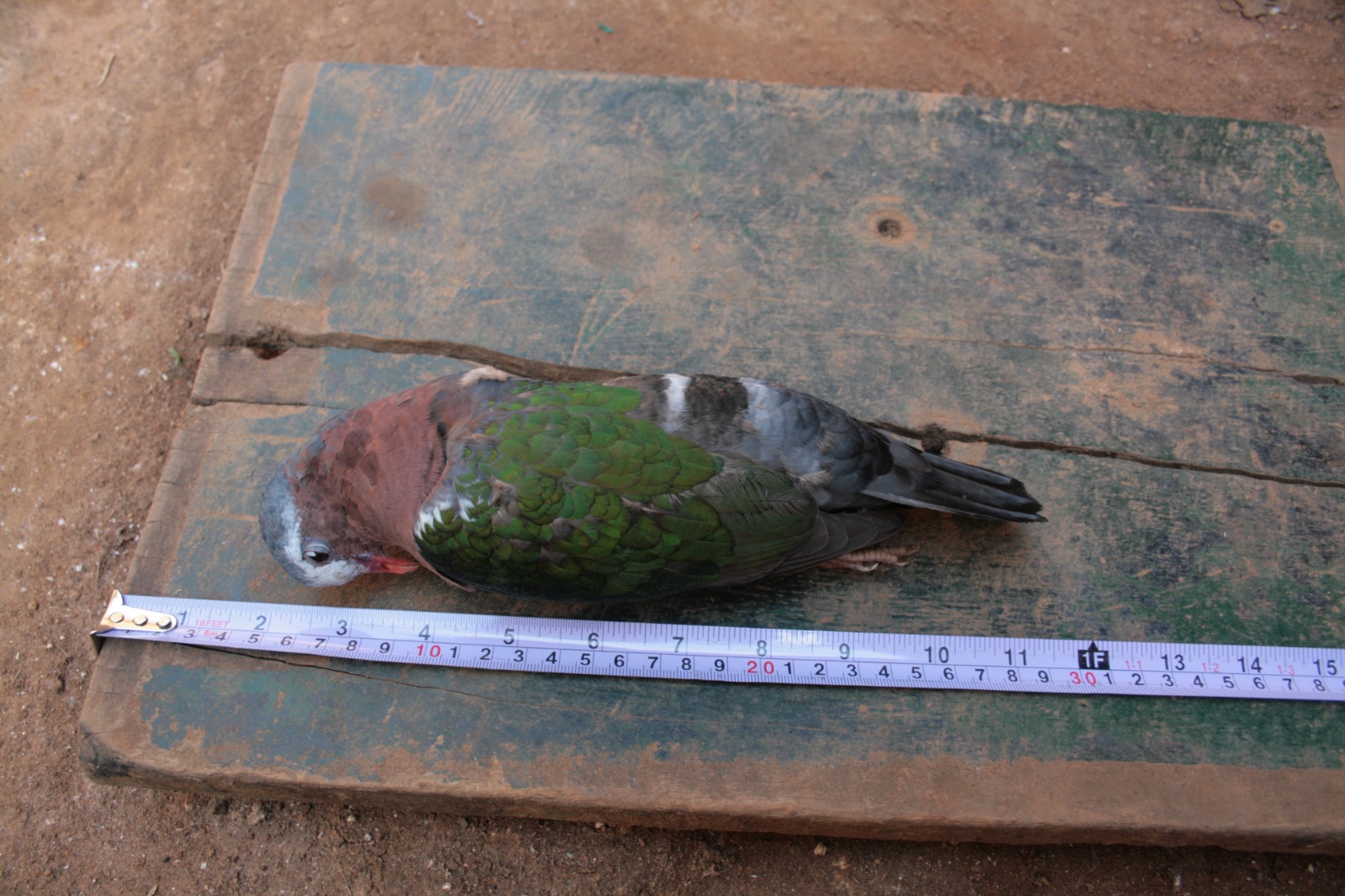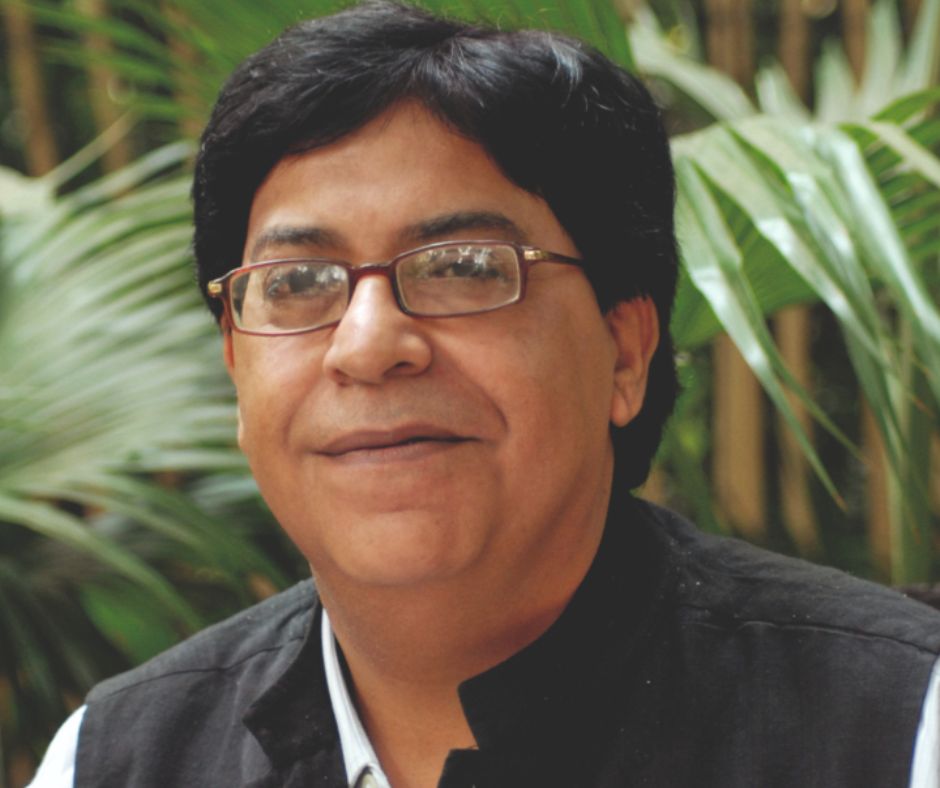Text : M.N.Ashish Ganju
Photographs: Helene Binet / Andre’ J Fanthome
Project Facts:
Clients: Neelima and Ashish Ganju
Year of Completion: 2002
Consultants: Structural – Peu Banerjee Das
Plumbing & Electrical – Sanjay Bhardwaj
Cost of Construction: Rs. 1.6 Million
Plot size: 450 sq.M
Built area: 250 sq.M
Contractor: Self-build
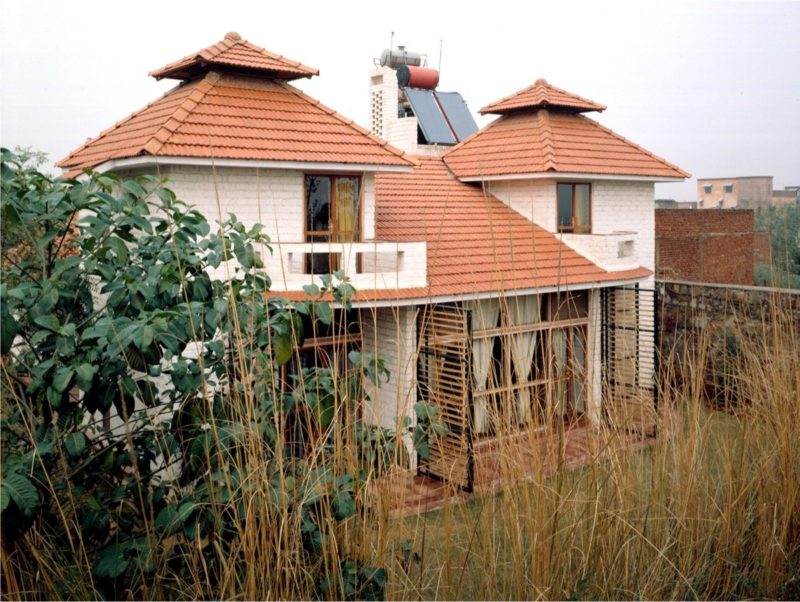
The residence and studio is the home and workplace of the author/ architect, and it is sited in a rapidly urbanizing area on the edge of New Delhi, in a neighborhood with minimum urban infrastructure. The building, therefore, had to rely largely on natural resources for its life-support systems. The design emerged as a low-rise building with sloping roofs to regulate solar heat gain, and to provide shelter from the rain, using a low embodied-energy material like clay tiles for roofing. The sloping roofs also allowed the insertion of mezzanine floors without making the building too tall; providing a gallery overlooking the living area of the residence, and a loft for a conference area in the studio.
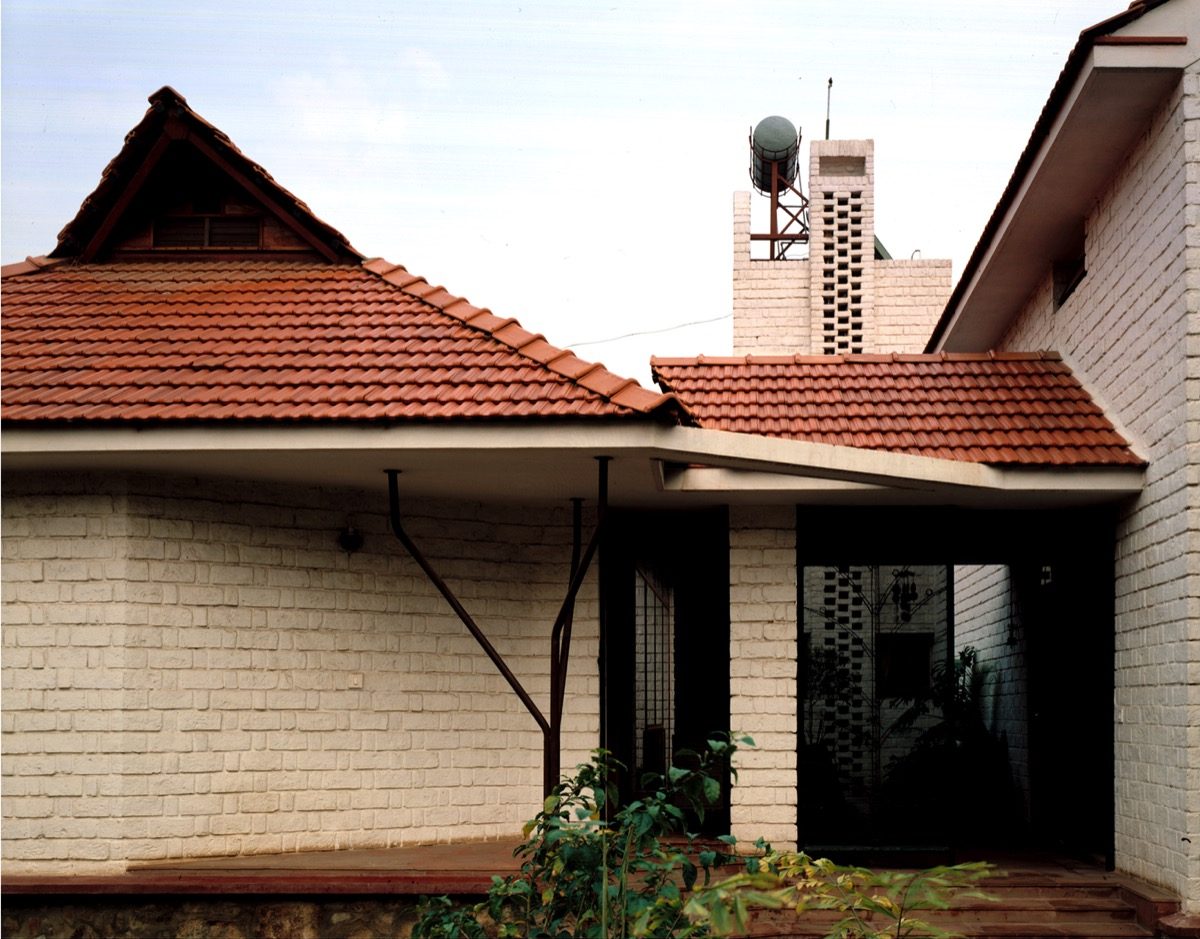
The roof of the studio encloses a singular volume, thereby becoming a metaphor for a ‘shed’, having four discrete working spaces visually separate but clearly interconnected parts of the single volume. The two parts of the building, for home and studio, are connected by an entrance verandah directly approached from the public driveway, and separated by an open-to-sky courtyard off this verandah. The internal courtyard brings natural light and ventilation into the studio which is built against the northern compound wall of the property, thereby increasing the area of the south-side garden for the residence.
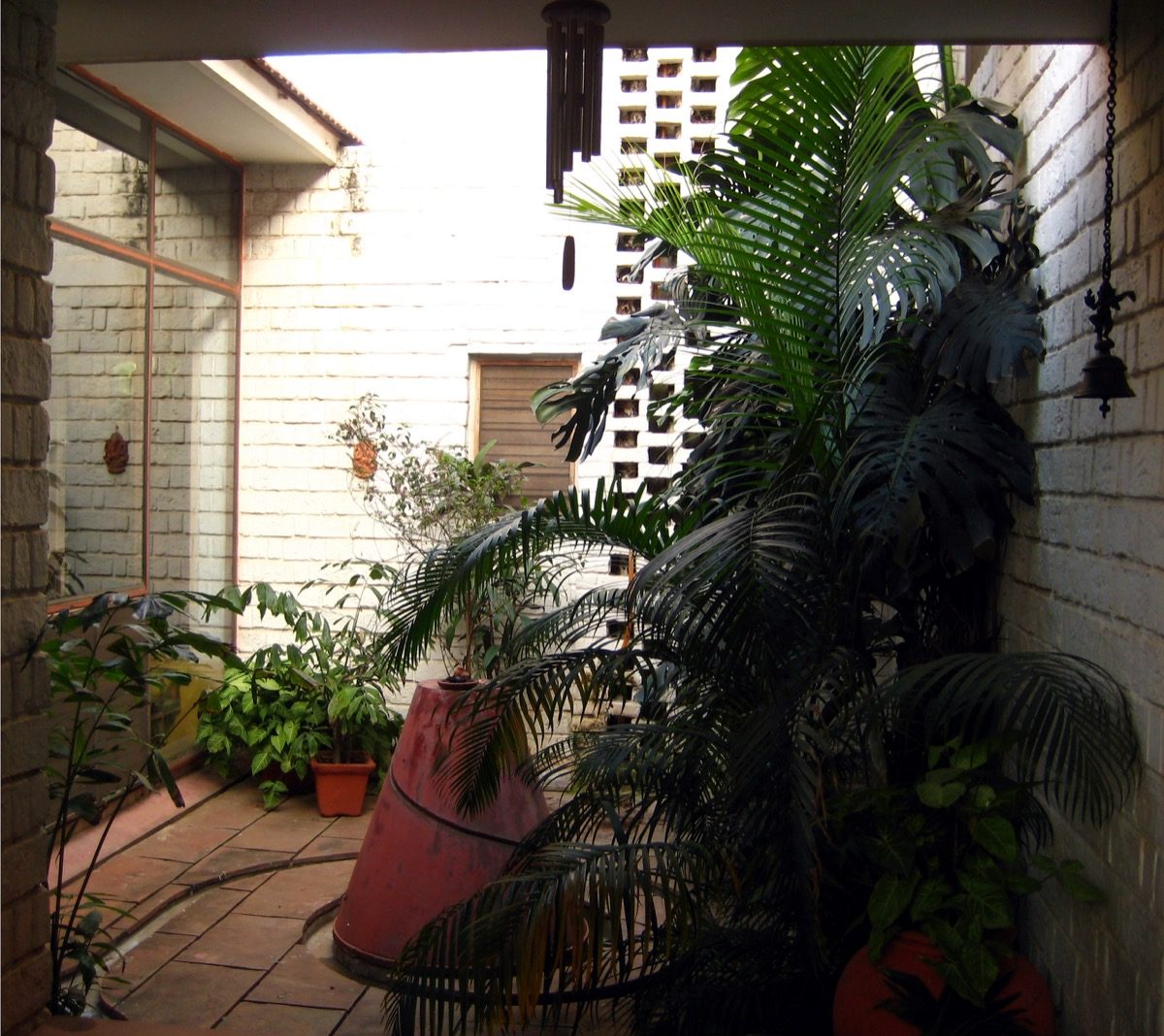
The plan form is ordered by a series of service spaces, like staircases, bathrooms, closets, and utility spaces grouped around the internal courtyard which forms the centre of the built environment. All habitable spaces are oriented to give major openings on south facing walls to allow the winter sun, low in the southern sky in Delhi, to penetrate indoors and maximize solar heat gain; while the summer sun, high in the sky, does not enter any of the rooms thereby minimizing adverse heat gain. Bedrooms on the upper floor have a pyramidal roof form with a ventilating monitor at the peak, which allows hot air to exhaust naturally and maintain thermal comfort in summer. In winter the monitor ventilation is closed by a set of trapdoors.
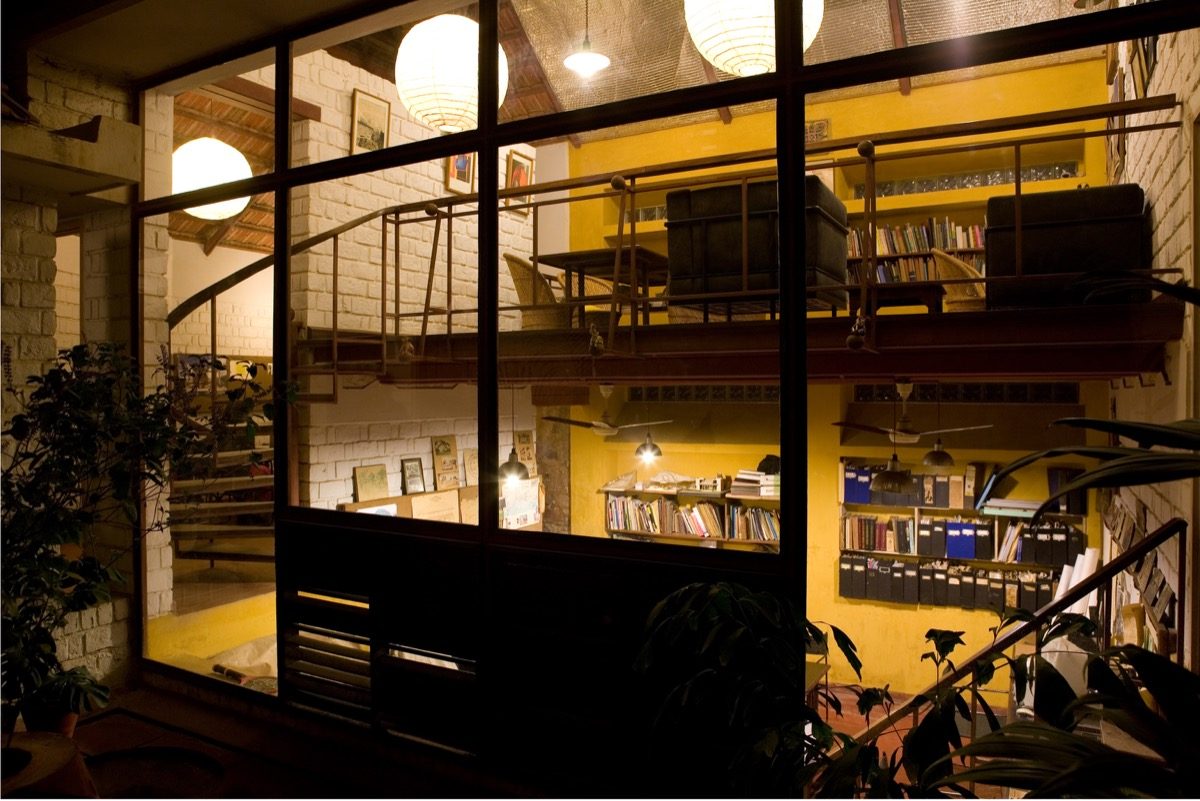
The materials chosen for construction represent a wide range combining the natural and vernacular like, brick, timber, stone and terracotta, with industrially produced and modern steel and glass elements. Hot water is provided by a solar system, and the large area of south-facing roof can support photo-voltaic panels for generating electricity in future when the costs of these panels is affordable. The treatment of sewage and waste water was done by a linear reed bed along the boundaries of the plot. The energy balance, inherent in the design, made it possible for autonomous living with only marginal dependence on an unreliable urban infrastructure.

Drawings
